-
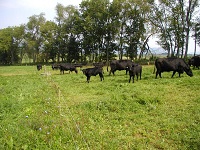
More for less in pastures
Getting more for less is an attractive concept. But it isn’t that easy when it comes to producing more food on less land with fewer resources. R. Howard Skinner has been researching this idea of more for less in agriculture. Skinner is a physiological plant ecologist and member of the USDA...Read more -

A New Year, A New Chapter!
A New Year, A New Chapter! Dear valued customers: After a year’s hardworking, Fangtong people will celebrate the spring festival from 19stJanuary to 2ndFebruary. In the past year of 2019, loyal clients from various countries have given us a lot of help and kind support, on behalf of everyone at...Read more -

‘Camera pill’ to examine horses
Veterinary and engineering researchers at the University of Saskatchewan (U of S) have teamed up to harness imaging technology to fill in a blank area in animal health — what goes on in a horse’s gut? “Whenever I talk to students about the horse abdomen, I put up a picture of a ...Read more -

Happy cows make more nutritious milk
Daily infusions with a chemical commonly associated with feelings of happiness were shown to increase calcium levels in the blood of Holstein cows and the milk of Jersey cows that had just given birth. The results, published in the Journal of Endocrinology, could lead to a better understanding of...Read more -

Doggy paddles help dogs to stay on the move
Canine hydrotherapy improves the mobility of Labradors suffering from elbow dysplasia. Not only this, it also positively affects the strides of healthy dogs, showing great potential as both a therapeutic tool and an effective way to keep your dog fit. Mobility is a huge issue for dogs suffering f...Read more -

Cutting cattle carbon Bad breath and flatulence
Cattle have bad breath and commonly suffer from severe, chronic flatus generating large amounts of methane, which is a greenhouse gas and a driver of anthropogenic global warming. There is an obvious answer to this problem, stop breeding cattle. Unfortunately a large proportion of us enjoy our bo...Read more -

Cooling cows efficiently with water spray
Dairies use intermittent sprinkler systems to cool cows in warm weather, but little experimental work has been done to determine how much water is needed to achieve beneficial effects. A group of dairy scientists conducted a study at the University of California, Davis, to examine the effects of ...Read more -
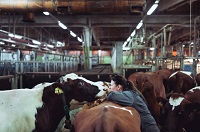
Cows in glass tanks help to reduce methane emissions
In the future, the breeding of the climate-friendly cow can be speeded up by using genetic information. A recent study identifies areas in the cow’s genotype which are linked to the amount of methane it produces. Cows subjected to study did not unnecessarily chew their cuds when being place...Read more -

Consumption of natural estrogens in cow’s milk does not affect blood levels or reproductive health
Estrogen occurs naturally in cow’s milk. Recently, there has been concern that consuming milk containing elevated amounts of estrogen could affect blood levels of the hormone in humans, leading to an increased risk of some cancers. A new study published in the Journal of Dairy Science® inve...Read more -
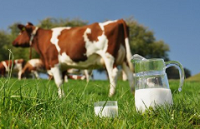
Consumers sour on milk exposed to LED light
Got LED light? Display cases and grocery stores increasingly do, and that’s bad news for milk drinkers. Cornell University researchers in the Department of Food Science found that exposure to light-emitting diode (LED) sources for even a few hours degrades the perceived quality of fluid mil...Read more -

Computers learn to spot deadly bacteria
Machine learning can predict strains of bacteria likely to cause food poisoning outbreaks, research has found. The study — which focused on harmful strains of E. coli bacteria — could help public health officials to target interventions and reduce risk to human health. Researchers at ...Read more -

Climate change may hurt animals’ ability to live on toxic plants
University of Utah lab experiments found that when temperatures get warmer, woodrats suffer a reduced ability to live on their normal diet of toxic creosote – suggesting that global warming may hurt plant-eating animals. “This study adds to our understanding of how climate change may ...Read more -

Cancer-causing virus strikes genetically vulnerable horses
Sarcoid skin tumors are the most common form of cancer in horses, but little is known about why the papillomavirus behind them strikes some horses and not others. A new study by an international research group led by scientists at the Baker Institute for Animal Health at Cornell’s College o...Read more -
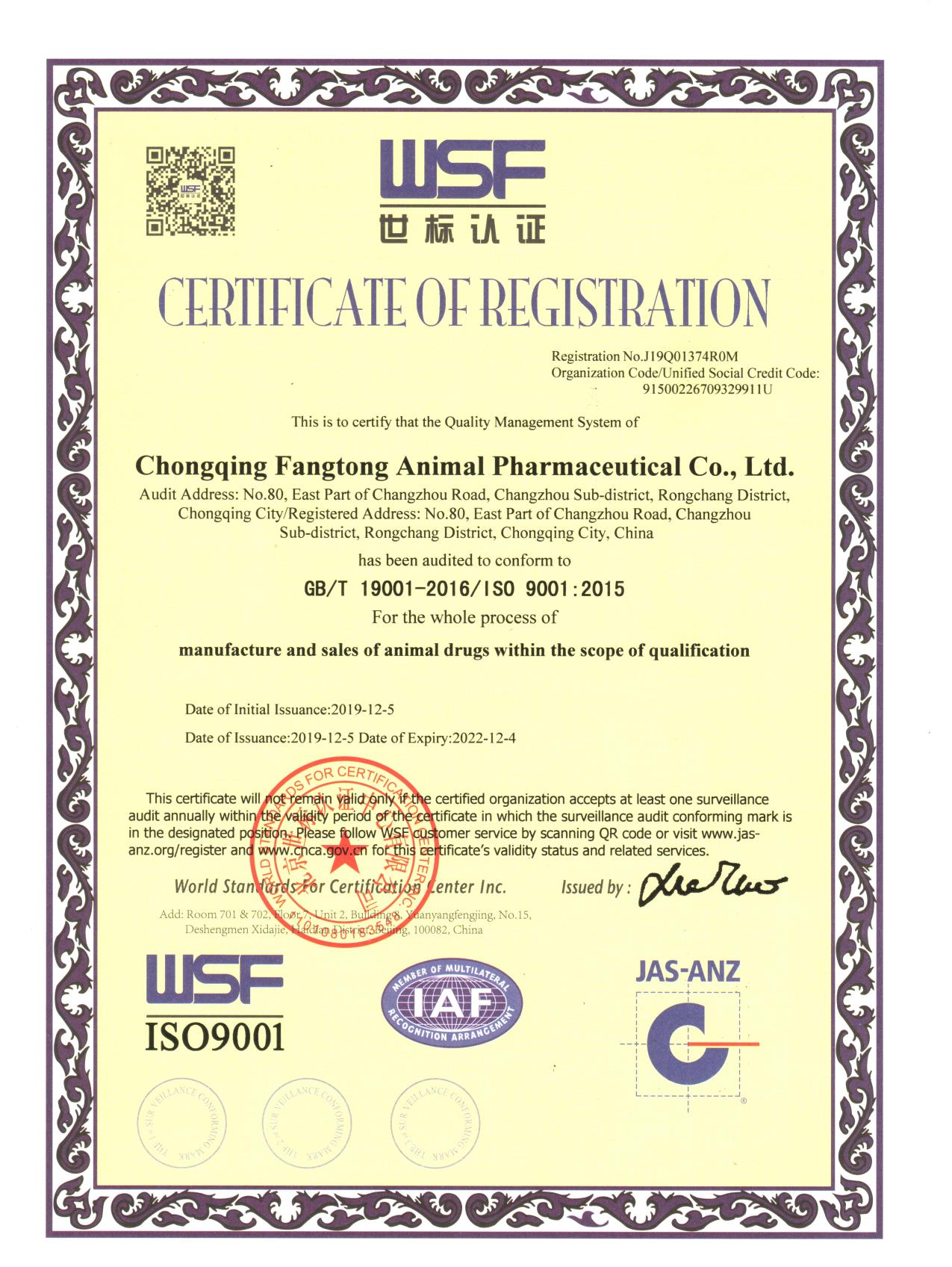
Congratulations! Fangtong Has Passed ISO9001 Certification.
Congratulations! Fangtong Has Passed ISO9001 Certification. Recently, Chongqing Fangtong Animal Pharmaceutical Co., Ltd successfully passed the on-site audit by Beijing World Standard Certification Center Inc. (World Standard Certification / WSF) and obtained GB / T 19001-2016 / ISO 9001: 2015 qu...Read more -
Control Program of Hydatid
Control Program of Cystic Hydatid Disease (2013–2018) Cystic hydatid disease (hereinafter referred as CHD) in man is caused principally by infection with the larval stage of the dog tapeworm Echinococcus granulosus. It is an important pathogenic zoonotic parasitic infection (acquired from anima...Read more -
The Reasonable Use of Antiparasite Druas for Animals
The Reasonable Use of Antiparasite Drugs for Animals [Abstract] As the rapid development of scientific technology, especially the pharmaceutical industry, the kinds of antiparasite drugs increase rapidly. It’s of great importance to use antiparasite drugs reasonably. Currently, antiparasite drugs...Read more -
Congratulations to Fangtong successfully passed the veterinary drug GMP renovation and re-inspection
From October 15th to 17th, 2019, Chongqing Agricultural and Rural Committee organized the veterinary drug GMP acceptance expert group of the Ministry of Agriculture and Rural Affairs to carry out a three-day veterinary drug GMP renovation and re-inspection for Chongqing Fangtong Animal Pharmaceut...Read more -
Congratulations to Fangtong’s successful participation in 10th China Dairy Exhibition
From July 12th to 14th, 2019, the 10th China Dairy Industry Conference (or 2019 China Dairy Industry Exhibition) grandly opened in Tianjin Meijiang Convention and Exhibition Center. Led by G.M. Mr. Jianhua Tang, Chongqing Fangtong Animal Pharmaceutical Co., Ltd. attended this grand exhibition. O...Read more -
Detection of unusual hybrid schistosomes in Malawi
LSTM’s Professor Russell Stothard is senior author on a new paper in which researchers from the UK and Malawi have described the unusual occurrence of novel schistosome hybrids infecting children along the Shire River Valley. The findings, published in the journal Emerging Infectious Disea...Read more -
Changing climate may affect animal-to-human disease transfer
Climate change could affect occurrences of diseases like bird-flu and Ebola, with environmental factors playing a larger role than previously understood in animal-to-human disease transfer. Researchers from The University of Queensland and Swansea University have been looking at how different en...Read more -

Translocation of bighorn sheep in Arizona has positive genetic outcomes
Translocation is an important management tool that has been used for more than 50 years to increase bighorn sheep population numbers in Arizona and to restore herds to suitable habitat throughout their historical range. Yet, translocation also can alter the underlying genetic diversity and spatia...Read more -
New massive dataset of bacterial proteins
Scientists from Switzerland and the Netherlands have conducted a quantitative and qualitative analysis of the proteins that the bacterium Escherichia coli expresses in 22 different growth conditions. More than 2,300 proteins were identified, some at average levels of one copy per cell. The result...Read more -
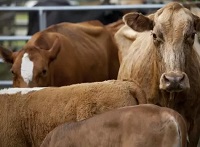
Biological treatment for cow disease
A University of Florida Institute of Food and Agricultural Sciences researcher and his colleagues are far more certain now that a new biological treatment could prevent dairy cattle from getting uterine diseases, which might improve food safety for people. That’s because Kwang Cheol “...Read more -

What does a healthy ageing cat look like?
The hair coat of older cats may take on a clumped and spiked appearance associated with a reduction in grooming activity. Just as improved diet and medical care have resulted in increased life expectancy in humans, advances in nutrition and veterinary care have increased the life span of...Read more

